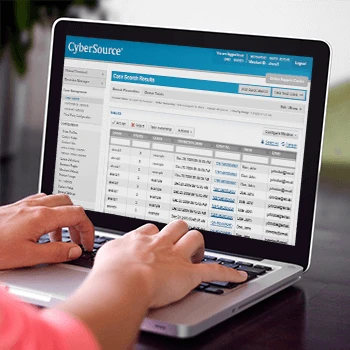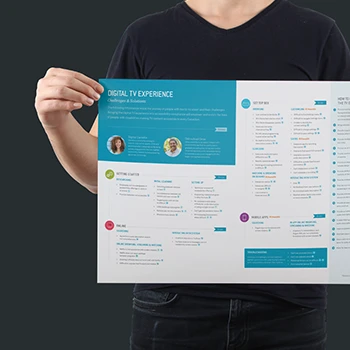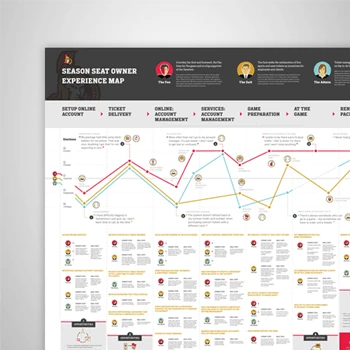What exactly are service personas and why do we need them for our business?
Service personas are detailed profiles representing different groups of people who interact with your service throughout the complete experience lifecycle. Unlike product personas focused on usage, service personas capture the emotional journey, context variations, and relationship evolution from customer to user to loyal client. They ensure your service design decisions center around real human needs rather than internal assumptions about what your audiences want.
Tip: Start with existing customer service data and support conversations to identify initial persona patterns before conducting formal research.
How do service personas differ from regular customer personas or user personas?
Service personas capture the complete end-to-end relationship across brand, content, product, and service touchpoints within our Experience Thinking framework. While customer personas focus on purchasing decisions and user personas emphasize task completion, service personas encompass the entire lifecycle journey including onboarding, ongoing support, relationship development, and advocacy stages. They include emotional states, support needs, and contextual variations that influence how people experience your service delivery.
Tip: Map persona differences across the customer-user-client lifecycle to understand how needs evolve throughout the relationship.
What makes a service persona research study successful versus mediocre?
Successful service persona research combines direct observation of service interactions with behavioral data analysis and longitudinal journey tracking. The research captures not just demographics and preferences, but emotional responses, contextual challenges, and relationship dynamics across multiple touchpoints. Quality research also validates personas through real service scenarios and measures their effectiveness in improving design decisions.
Tip: Include service delivery staff in research planning since they observe daily persona behaviors that surveys and interviews might miss.
How many service personas do we typically need for effective service design?
Most services benefit from 3-6 primary service personas, with additional secondary personas for specific contexts or edge cases. The number depends on service complexity, channel diversity, and genuine behavioral differences among your audience. Having too few personas oversimplifies design decisions, while too many creates analysis paralysis and implementation challenges across your service team.
Tip: Start with primary personas representing 80% of your service interactions, then add secondary personas only when they reveal significantly different service needs.
Should service personas include internal staff or focus only on external customers?
Effective service persona research includes both external customers and internal service delivery staff. Employee personas help design internal processes, training programs, and tools that enable authentic service delivery. Within Experience Thinking, employee personas ensure the service experience flows seamlessly from internal operations to external interactions. Staff personas are particularly crucial for services requiring high human interaction or complex problem-solving.
Tip: Create paired external-internal persona relationships showing how staff personas support specific customer persona needs.
What role does foresight design play in service persona development?
Foresight design enhances service personas by exploring how customer needs, behaviors, and contexts might evolve over time. Rather than designing for current personas only, foresight design helps anticipate future persona variations, emerging interaction patterns, and changing service expectations. This approach creates more resilient personas that remain relevant as technology, society, and business models change.
Tip: Include scenario planning exercises to explore how your personas might behave in different future contexts and technology environments.
How detailed should service personas be without becoming overwhelming for teams to use?
Effective service personas balance depth with usability through structured detail levels. Core personas include essential demographics, service goals, emotional drivers, and key behaviors. Extended profiles contain contextual details, pain points, and interaction preferences. Teams need enough detail to make informed design decisions without cognitive overload during daily work. Visual formats and concise summaries make personas more accessible for frequent reference.
Tip: Create persona 'quick reference' cards highlighting the three most important insights for daily design decisions.
What research methods work best for developing accurate service personas?
Service persona research combines multiple methods including ethnographic observation during service interactions, longitudinal journey tracking, service touchpoint analysis, and contextual interviews. Behavioral data from service delivery systems provides quantitative patterns while qualitative methods reveal emotional and contextual insights. Mixed methods ensure personas reflect both actual behaviors and underlying motivations driving service decisions.
Tip: Observe actual service interactions rather than just asking people to describe their experiences, since behavior often differs from self-reported preferences.
How do we capture emotional and contextual aspects of service experiences in persona research?
Emotional and contextual research requires immersive methods like service shadowing, experience diaries, and critical incident analysis. Journey mapping sessions reveal emotional peaks and valleys throughout service interactions. Environmental analysis captures how physical, social, and temporal contexts influence persona behaviors. These methods within our Experience Thinking framework ensure personas reflect the complete service experience, not just functional requirements.
Tip: Use photo journals and experience diaries to capture context and emotions that participants might not articulate in interviews.
What sample sizes and participant selection criteria should we use for service persona research?
Service persona research typically requires 20-40 participants per persona group for qualitative insights, with larger samples for quantitative validation. Participant selection should represent behavioral diversity rather than just demographic variety. Include both existing customers and prospects, frequent and occasional users, satisfied and frustrated participants. Geographic and cultural representation matters for services operating across diverse markets.
Tip: Prioritize behavioral diversity over demographic quotas when recruiting participants to ensure personas capture genuine usage differences.
How do we research service personas across multiple channels and touchpoints effectively?
Multi-channel persona research maps participant journeys across all service touchpoints including digital platforms, physical locations, phone support, and third-party channels. Cross-channel tracking reveals how persona preferences and behaviors shift between touchpoints. Experience Thinking methodology ensures we capture how brand, content, product, and service experiences interconnect across channels for each persona group.
Tip: Create channel-specific journey maps for each persona to identify where preferences and behaviors change across touchpoints.
What role should existing customer data play in service persona research?
Existing customer data provides essential behavioral baselines and helps identify initial persona patterns before primary research begins. Service delivery metrics, support interaction data, and usage analytics reveal actual behaviors that research can then explore and explain. However, data alone cannot capture motivations, emotions, and contextual factors that drive persona behaviors. Integration of quantitative data with qualitative insights creates more accurate and actionable personas.
Tip: Use behavioral data to identify persona candidates, then conduct qualitative research to understand the why behind the patterns.
How do we validate service personas to ensure they accurately represent real customers?
Service persona validation involves testing personas against real service scenarios, comparing persona predictions with actual customer behaviors, and gathering feedback from customer-facing staff. A/B testing service approaches designed for different personas reveals their practical accuracy. Regular validation ensures personas remain current as customer needs and service contexts evolve. Validation should happen during research and periodically after implementation.
Tip: Create service scenarios based on personas and test them with both research participants and service delivery staff to confirm accuracy.
What timeline should we expect for thorough service persona research and development?
Comprehensive service persona research typically requires 8-12 weeks including research design, participant recruitment, data collection, analysis, and persona development. Timeline depends on research scope, participant availability, number of touchpoints studied, and validation requirements. Rush timelines often result in superficial personas that don't capture the depth needed for effective service design decisions.
Tip: Plan for longer timelines if your service operates across multiple time zones or requires seasonal behavior analysis.
How do we align service persona research with current business objectives and priorities?
Service persona research alignment begins with understanding business goals, competitive challenges, and growth strategies before designing research approaches. Personas should directly connect to key performance indicators, customer satisfaction goals, and operational efficiency targets. The Experience Thinking framework helps align persona insights across brand positioning, content strategy, product development, and service delivery objectives to ensure research creates actionable business value.
Tip: Start persona research by mapping business objectives to specific customer experience questions that personas need to answer.
What stakeholders should be involved in service persona research planning and development?
Service persona research requires input from customer service, sales, marketing, operations, and leadership stakeholders who have different perspectives on customer needs and business priorities. Including diverse stakeholders ensures personas address various organizational requirements and gain broader internal support. Front-line staff provide operational insights while leadership ensures strategic alignment and resource commitment.
Tip: Create a stakeholder map showing how each group will use personas to ensure research captures their specific decision-making needs.
How do service personas connect to business metrics and key performance indicators?
Service personas connect to business metrics by revealing which customer behaviors drive revenue, retention, satisfaction, and operational efficiency. Well-developed personas help predict customer lifetime value, identify expansion opportunities, and reduce service delivery costs. They enable measurement of persona-specific metrics like satisfaction scores, resolution times, and channel preferences that directly impact business performance.
Tip: Define persona-specific success metrics before research begins so you can track business impact after persona implementation.
What business challenges can service persona research help solve most effectively?
Service persona research effectively addresses customer experience inconsistencies, service delivery inefficiencies, channel optimization challenges, and customer retention issues. Personas help solve problems like high support volume, low customer satisfaction, unclear service differentiation, and resource allocation across touchpoints. Through Experience Thinking methodology, personas reveal how business challenges connect across brand, content, product, and service experiences.
Tip: Map specific business pain points to persona insights needed so research directly addresses your most critical challenges.
How do we build business cases that justify investment in service persona research?
Business cases for service persona research should quantify potential improvements in customer satisfaction, retention rates, operational efficiency, and revenue growth. Calculate costs of current service inefficiencies, customer churn, and missed opportunities that personas could address. Include implementation timelines and expected return on investment from improved service design decisions based on deep customer understanding.
Tip: Include competitive analysis showing how customer-centric service design creates market advantages that justify research investment.
What organizational changes might be needed to effectively use service persona insights?
Effective persona implementation often requires changes in decision-making processes, staff training programs, performance metrics, and cross-functional collaboration approaches. Organizations may need new roles focused on customer experience, updated service standards reflecting persona needs, and systems enabling persona-based service delivery. Cultural shifts toward customer-centricity support successful persona adoption across all service touchpoints.
Tip: Plan organizational change management alongside persona research to ensure insights translate into operational improvements.
How do service personas support strategic planning and future service development?
Service personas inform strategic planning by revealing unmet customer needs, emerging service requirements, and opportunities for innovation. They help prioritize feature development, channel investments, and capability building based on customer value rather than internal preferences. Personas also support scenario planning for future service strategies and market expansion decisions within foresight design frameworks.
Tip: Use personas to evaluate potential strategic initiatives by asking how each option would impact different customer groups.
How do service personas translate into actual service design and delivery improvements?
Service personas translate into improvements through specific design applications like personalized service scripts, channel-specific interaction guidelines, and problem resolution approaches tailored to persona needs. Within Experience Thinking methodology, personas influence service blueprints, staff training content, and operational processes ensuring consistent delivery across all touchpoints. Implementation requires systematic integration into existing service operations and new development processes.
Tip: Create persona-specific service standards and interaction guidelines that staff can reference during customer interactions.
What training and communication approaches help service staff understand and apply persona insights?
Effective persona training combines storytelling, role-playing scenarios, and practical application exercises that help staff internalize customer perspectives. Interactive workshops, persona cards, and real-world examples make abstract personas tangible for daily service decisions. Regular reinforcement through team meetings, performance feedback, and success stories maintains persona awareness and application across the service organization.
Tip: Create persona-based training scenarios that staff practice regularly to build intuitive understanding of different customer needs.
How do we customize service experiences for different personas without creating operational complexity?
Service customization balances persona-specific needs with operational efficiency through flexible service frameworks rather than completely separate processes. Core service elements remain consistent while interaction style, communication preferences, and problem-solving approaches adapt to persona requirements. Technology platforms and staff training enable personalization without multiplying operational complexity or resource requirements.
Tip: Design service flexibility into core processes rather than creating separate workflows for each persona to maintain operational efficiency.
What role do service personas play in channel strategy and omnichannel experience design?
Service personas inform channel strategy by revealing where different customer groups prefer to interact and how they move between touchpoints during service journeys. Within Experience Thinking, personas ensure consistent experience quality across brand, content, product, and service channels while respecting persona-specific preferences. They guide resource allocation, feature prioritization, and integration requirements for seamless omnichannel experiences.
Tip: Map persona journeys across all channels to identify integration points where seamless handoffs are most critical for customer satisfaction.
How do personas influence service operations, staffing decisions, and resource allocation?
Personas influence operations by revealing staffing patterns needed for different customer types, peak usage times, and support complexity levels. They inform hiring criteria, training requirements, and team specialization decisions. Resource allocation becomes more strategic when based on persona value, volume, and service requirements rather than general operational assumptions about customer needs.
Tip: Analyze persona-specific service costs and value to optimize staffing and resource allocation across different customer segments.
What technology and systems support persona-driven service delivery?
Persona-driven service delivery benefits from customer relationship management systems that track persona characteristics, interaction history, and preferences. AI-powered tools can suggest persona-appropriate responses and escalation paths. Analytics platforms measure persona-specific satisfaction and performance metrics. Integration across service technologies ensures consistent persona recognition and appropriate treatment across all touchpoints.
Tip: Implement persona identification systems that help staff quickly understand customer context and appropriate service approaches.
How do we maintain service persona relevance as customers and markets evolve?
Service persona maintenance requires ongoing monitoring of customer behavior changes, market shifts, and service performance variations. Regular persona review cycles, customer feedback analysis, and behavioral data tracking reveal when personas need updates. Foresight design principles help anticipate persona evolution and adapt service approaches proactively rather than reactively to maintain customer relevance and business effectiveness.
Tip: Establish quarterly persona review sessions to assess changes in customer behavior and market conditions that might affect persona accuracy.
What metrics demonstrate successful implementation of service persona insights?
Service persona success metrics include improved customer satisfaction scores, reduced service resolution times, increased customer retention rates, and higher employee confidence in customer interactions. Persona-specific metrics reveal whether different customer groups receive appropriate service levels. Operational metrics like call volume reduction and channel optimization also indicate effective persona application in service design and delivery.
Tip: Establish baseline measurements before persona implementation to accurately track improvement across customer satisfaction and operational efficiency.
How do we measure persona accuracy and ongoing relevance to actual customer behaviors?
Persona accuracy measurement compares predicted behaviors with actual customer actions across service touchpoints. Analytics tracking, customer feedback, and staff observations reveal whether personas accurately represent real customer needs and preferences. Regular validation studies and behavioral pattern analysis ensure personas remain current as customer expectations and market conditions evolve over time.
Tip: Create persona accuracy dashboards tracking key behavioral predictions against actual customer data to identify when updates are needed.
What return on investment can we expect from service persona research and implementation?
Service persona ROI typically manifests through reduced service costs, improved customer lifetime value, higher satisfaction scores, and increased operational efficiency. Organizations often see 15-30% improvements in customer satisfaction and 20-40% reductions in service resolution times. Revenue impact comes from better customer retention, increased cross-selling opportunities, and premium pricing enabled by superior service experiences designed around customer needs.
Tip: Track both quantitative metrics and qualitative improvements in staff confidence and customer feedback to capture full ROI impact.
How do we track persona-specific customer satisfaction and service quality improvements?
Persona-specific tracking requires segmented measurement approaches that evaluate satisfaction and quality for different customer groups separately. Survey design, feedback collection, and performance analysis should account for persona differences in preferences, expectations, and communication styles. This granular measurement reveals which personas benefit most from service improvements and where additional optimization is needed.
Tip: Design feedback collection methods that match persona communication preferences to improve response rates and data quality.
What competitive advantages does persona-driven service design create in the marketplace?
Persona-driven service design creates competitive advantages through superior customer understanding, more relevant service delivery, and differentiated experience quality. Organizations using personas can respond faster to customer needs, provide more personalized interactions, and build stronger customer relationships. These advantages become particularly valuable in commoditized markets where service quality becomes the primary differentiator.
Tip: Monitor competitor service approaches and customer switching patterns to understand how persona-driven advantages translate to market position.
How do service personas contribute to long-term customer relationship development and loyalty?
Service personas contribute to relationship development by enabling consistent, relevant interactions that build trust and satisfaction over time. Within Experience Thinking, personas ensure service experiences align with customer expectations across all lifecycle stages from initial engagement through advocacy. Understanding persona evolution helps services adapt to changing customer needs while maintaining relationship strength and loyalty.
Tip: Track customer lifecycle progression and relationship deepening metrics to measure how persona-driven service builds long-term loyalty.
What predictive insights can service personas provide for future business planning?
Service personas provide predictive insights into customer behavior changes, emerging service requirements, and market opportunity identification. Foresight design approaches using personas help anticipate future customer needs, technology adoption patterns, and competitive responses. These insights inform strategic planning, resource allocation, and innovation priorities that position organizations ahead of market changes rather than reactive to them.
Tip: Use persona trends and behavior changes as early indicators of market shifts that require strategic business responses.
How does artificial intelligence enhance service persona research and application?
AI enhances service persona research through automated pattern recognition in customer data, natural language processing of feedback and interactions, and predictive modeling of persona behaviors. Machine learning algorithms can identify emerging persona patterns, suggest persona updates, and recommend personalized service approaches. However, AI augments rather than replaces human insight in understanding complex emotional and contextual factors that drive persona behaviors.
Tip: Use AI for data pattern identification and hypothesis generation while maintaining human oversight for persona interpretation and strategic application.
What role do analytics and behavioral data play in persona development and refinement?
Analytics and behavioral data provide quantitative foundations for persona development by revealing actual usage patterns, interaction preferences, and service outcome correlations. Data analysis identifies initial persona candidates and validates qualitative research findings. Ongoing analytics track persona accuracy and reveal behavior changes that require persona updates. Integration of quantitative and qualitative insights creates more robust and actionable service personas.
Tip: Combine analytics insights with observational research to understand both what personas do and why they behave that way.
How do digital service platforms and customer relationship management systems support persona-driven experiences?
Digital platforms support persona-driven experiences through customer segmentation, personalized content delivery, interaction tracking, and automated service routing based on persona characteristics. CRM systems store persona profiles, interaction history, and preferences enabling consistent service delivery across touchpoints. Integration across platforms ensures persona recognition and appropriate treatment regardless of how customers access services.
Tip: Ensure platform integration enables seamless persona recognition and appropriate service delivery across all digital and human touchpoints.
What privacy and data considerations are important when developing and using service personas?
Service persona development must comply with privacy regulations, obtain appropriate consent for data usage, and implement security measures protecting customer information. Personas should aggregate individual data into patterns rather than storing personally identifiable information. Transparency about data usage, anonymization practices, and customer control over information builds trust while enabling effective persona research and application.
Tip: Work with legal and compliance departments early in persona research planning to ensure all privacy requirements are properly addressed.
How do emerging technologies like voice interfaces and chatbots integrate with service persona strategies?
Emerging technologies integrate with persona strategies by adapting interaction styles, response patterns, and service capabilities to match persona preferences and contexts. Voice interfaces can adjust tone and complexity based on persona characteristics. Chatbots can provide persona-appropriate responses and escalation paths. Technology implementation should enhance rather than replace human understanding of persona needs and preferences.
Tip: Design technology implementations to recognize persona context and preferences while maintaining options for human interaction when needed.
What automation opportunities exist for persona-driven service delivery without losing human connection?
Automation opportunities include persona-based routing, initial response generation, information gathering, and routine transaction processing while preserving human interaction for complex problems and relationship building. Within Experience Thinking, automation should enhance service quality and efficiency without compromising the human elements that create emotional connection and trust with different persona groups.
Tip: Design automation to handle routine tasks efficiently while ensuring easy escalation to human staff when persona needs require personal attention.
How do we balance technological efficiency with persona-specific service personalization needs?
Balancing efficiency with personalization requires technology platforms that enable mass customization rather than mass standardization. Systems should provide consistent core functionality while allowing persona-specific variations in interaction style, content presentation, and service delivery approaches. Effective balance maintains operational efficiency while delivering relevant, personalized experiences that meet diverse persona requirements across the service ecosystem.
Tip: Implement flexible technology architectures that enable personalization without creating separate systems for each persona group.
How do service personas evolve as markets change and customer expectations shift?
Service personas evolve through continuous monitoring of customer behavior changes, market trend analysis, and regular research updates that capture shifting expectations and needs. Foresight design principles help anticipate persona evolution rather than just react to changes. Evolution patterns often reflect broader societal shifts, technology adoption, competitive influences, and generational changes that affect how different customer groups interact with services.
Tip: Establish persona evolution tracking systems that identify early signals of behavior changes before they become widespread patterns.
What role do service personas play in innovation and new service development?
Service personas guide innovation by revealing unmet needs, emerging requirements, and opportunities for differentiation that traditional market research might miss. Within Experience Thinking, personas ensure new services align with customer realities across brand, content, product, and service dimensions. They help prioritize innovation investments and validate concepts before full development, reducing risk and improving success rates for new service launches.
Tip: Use personas to evaluate innovation opportunities by assessing which concepts address genuine persona needs versus interesting but irrelevant features.
How do global and multicultural considerations affect service persona research and implementation?
Global service persona research must account for cultural differences in communication styles, service expectations, relationship preferences, and contextual factors that influence service interactions. Cultural adaptation goes beyond language translation to include different concepts of time, hierarchy, personal space, and problem-solving approaches. Effective global personas balance universal human needs with culture-specific service requirements and preferences.
Tip: Collaborate with local market experts during persona research to capture cultural nuances that external researchers might misinterpret.
What emerging trends are shaping the future of service persona research and application?
Emerging trends include AI-enhanced persona insights, real-time behavioral tracking, predictive persona modeling, and integration with Internet of Things data sources. Sustainability concerns, remote service delivery, and changing work patterns also influence persona development. Foresight design approaches help anticipate how these trends will affect customer needs and service delivery requirements over time.
Tip: Monitor emerging technology capabilities and social trends that might change how your personas interact with services in the future.
How do service personas support organizational transformation and digital modernization initiatives?
Service personas support transformation by ensuring modernization efforts address real customer needs rather than just technological capabilities. They guide digital strategy, platform selection, and process redesign decisions based on customer impact rather than internal efficiency alone. Personas help organizations avoid technology-driven solutions that improve operations but worsen customer experiences or fail to address genuine service requirements.
Tip: Use personas to evaluate transformation initiatives by assessing customer impact alongside operational improvements.
What advanced applications of service persona insights can create breakthrough service experiences?
Advanced applications include predictive service delivery that anticipates persona needs, proactive problem resolution based on behavior patterns, and dynamic service adaptation that responds to real-time persona context. Integration across service ecosystems enables seamless handoffs and coordinated experiences. Experience Thinking methodology ensures advanced applications enhance rather than complicate the fundamental human aspects of service relationships.
Tip: Focus advanced applications on enhancing human connection and problem-solving rather than just technological sophistication.
How do service personas contribute to sustainable business practices and social responsibility?
Service personas contribute to sustainability by revealing customer values, environmental concerns, and social responsibility expectations that influence service preferences. Understanding persona attitudes toward sustainability helps design services that align with customer values while achieving business objectives. Responsible persona research itself respects customer privacy, avoids manipulative applications, and considers broader social impacts of service design decisions.
Tip: Include sustainability and social values in persona research to understand how these factors influence service expectations and loyalty.












